

| Note: Move cursor over product name to display. Click for larger size and info | ||||||||||||||||||||||||||||||||||||||||||||||||||||||||||||||||
|
||||||||||||||||||||||||||||||||||||||||||||||||||||||||||||||||
|
||||||||||||||||||||||||||||||||||||||||||||||||||||||||||||||||
| Note: Move cursor over product name to display. Click for larger size and info | ||||||||||||||||||||||||||||||||||||
|
||||||||||||||||||||||||||||||||||||
|
||||||||||||||||||||||||||||||||||||


MJO composites based on a multivariate index utilizing outgoing longwave radiation, 850 hPa zonal wind and 200 hPa zonal wind data (Wheeler and Hendon, 2004). Examples of the index are available at the Bureau of Meteorology Research Centre. Only data significant at the 95% confidence interval are shaded in the composites.
| November - March | May - September | |
|---|---|---|
| 200 hPa Velocity Potential | 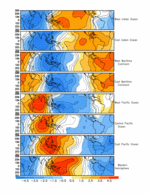 | 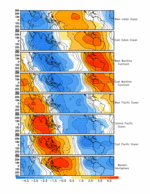 |
| Outgoing Longwave Radiation | 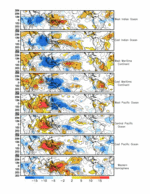 | 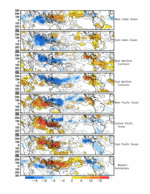 |
| Precipitation | 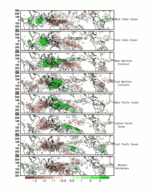 | 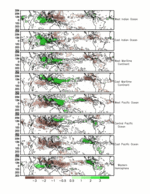 |
| 850 hPa Wind and Velocity Potential | 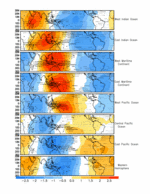 | 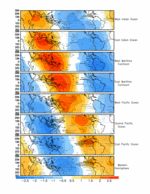 |
| Sea Level Pressure | 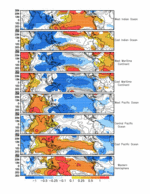 | 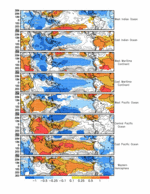 |
|
Higgins, R. W., and S. D. Schubert, 1996: Simulations of persistent North Pacific circulation anomalies and interhemispheric teleconnections. J. Atmos. Sci., 53, 188-207. Higgins, R. W., and K. C. Mo, 1997: Persistent North Pacific circulation anomalies and the tropical intraseasonal oscillation. J. Climate, 10, 223-244. Higgins, R. W., J. K. Schemm, W. Shi and A. Leetmaa, 2000a: Extreme precipitation events in the western United States related to tropical forcing. J. Climate, 13,793-820. Higgins, R. W., and W. Shi, 2001: Intercomparison of the principal modes of interannual and intraseasonal variability of the North American Monsoon System. J. Climate, 14, 403-417. Kousky, V. and M. Kayano, 1994: Principal modes of outgoing longwave radiation and 250-mb circulation for the South American sector. J. Climate, 1994, 1131-1143. Kayano, M. and V. Kousky, 1999: Intraseasonal (30-60 day) variability in the global tropics: principal modes and their evolution. Tellus, 51, 373-386. Mo, K. C. and R. W. Higgins, 1998: Tropical influences on California precipitation. J. Climate, 11, 412-430. Zhang, C. and J. Gottschalck, 2002: SST Anomalies of ENSO and the Madden-Julian Oscillation in the Equatorial Pacific. Journal of Climate, 15, 2429-2445. |